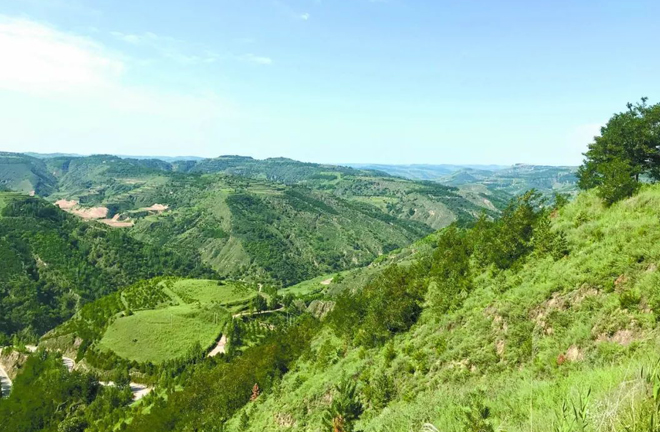Conversion of farmland into forests to protect ecological environment

The scenery of Wuqi County of Yan’an City after farmland was returned to forest Photo: Lu Hang/CSST
YAN’AN—The academic seminar “New Pattern of Western Development—20 Years of Yan’an Returning Farmland to Forests” was held recently to review Yan’an’s achievements and explore how to build a healthy ecological civilization and a beautiful China.
Yan’an City of Shaanxi Province has taken the lead in returning farmland to forests across the country since 1999, sparking a magnificent “green revolution.” Dang Shuangren, director of the Shaanxi Forestry Bureau, said that as the base of the Grain for Green Project, launched in 1999, Yan’an City in particular, has made the most significant achievements in the country. The Loess Plateau centered in northern Shaanxi has exhibited the largest growth in terms of successive greenery covered areas. The Yan’an loess has transformed into a green sea, achieving full green coverage. Shaanxi Province, especially northern Shaanxi, should continue this trend.
Favoring trees and grass over farmland with weak ecological capacity and poor cultivation potential can help prevent water and soil erosion from the source, reduce natural disasters, increase carbon sinks and mitigate climate change. Shan Lun, an academician of the Chinese Academy of Engineering, said that Yan’an has exhibited serious water and soil erosion. Before 1999, the soil Yan’an annually lost into the Yellow River was 1/3 of what Shaanxi annually lost. After the implementation of the Grain for Green Project, the green border has moved more than 400 kilometers to the north, as a successful paradigm of ecological restoration.
Yan’an is the epitome of China’s Grain for Green Project. Liu Guangquan, a senior engineer of the China Institute of Water Resources and Hydropower Research, said that the project has effectively improved our ecological environment. The forest coverage rate in northern Shaanxi has increased from less than 10% since the founding of the People’s Republic China to 46.35% today, with its vegetation coverage rate as high as 79.8%. Yan’an’s planning area for forestry accounts for 78.1% of its total land area. It can be said that Yan’an has made a historic transformation in its construction of ecological civilization.
Fu Bojie, an academician of the Chinese Academy of Sciences, said that as the world’s largest ecological construction project, the Grain for Green Project has made great contributions to addressing global climate change, and it has become a landmark project in which China attaches great importance to ecological construction and conscientiously adheres to international conventions.
The project has put an end to the history of deforestation and land reclamation in China that has lasted for thousands of years and helped to treat serious water and soil erosion. Niu Fang, director of the Institute of Sociology under the Shaanxi Academy of Social Sciences, said that the conversion of farmland into forests has improved the ecological environment, optimized the land use structure and rural industrial structure in local areas.
“The success of Yan’an is mainly due to the implemented national subsidy policy for returning farmland to forests, the supervision of party committees and governments at all levels, and the self-reliance and hard work of Yan’an people over the past 20 years,” said Xu Changyu, curator of the library at Yan’an University. From the perspective of economics, conversion of cultivated land into forests is not only about ecological restoration, but also an economic phenomenon that can be analyzed by costs and profits. As such, we must pay attention to both ecological and economic benefits.
Gan Hui, chairman of the Shaanxi Social Sciences Association, said that by returning farmland to forests and developing modern agriculture, Yan’an has transformed its agricultural industrial structure with a healthy agricultural industry and ecological environment on the original barren Loess Plateau.
Since 2000, the state has successively launched a number of key ecological construction projects in the western region, such as the Grain for Green Project, the Natural Forest Protection Project and the Beijing-Tianjin Dust Storms Sources Control Project. Wu Pute, president of the Northwest Agriculture and Forestry University, said that the conversion of farmland into forests is a strategic move to build a healthy ecological civilization and a beautiful China. It is a necessary step in solving the problems of water and soil erosion and sandstorm damage in China. It is also of great significance for promoting green development, increasing China’s forest resources and addressing global climate change.
edited by YANG LANLAN

 PRINT
PRINT CLOSE
CLOSE